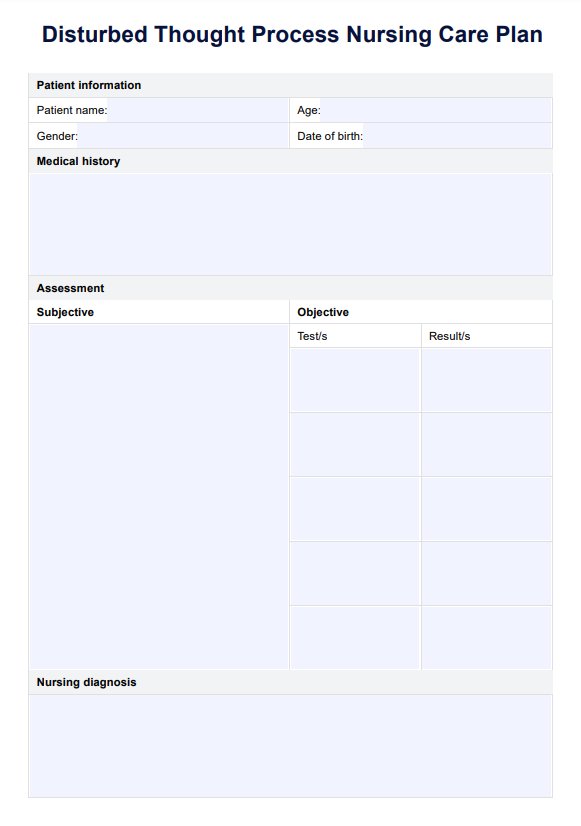A nursing diagnosis for disturbed thought processes typically identifies the specific cognitive impairments and potential risks associated with schizophrenia symptoms along with various factors in a patient's condition, facilitating targeted interventions.

Disturbed Thought Process Nursing Care Plan
Explore our downloadable template for a Disturbed Thought Process Nursing Care Plan to streamline nursing documentation.
Disturbed Thought Process Nursing Care Plan Template
Commonly asked questions
Family members can provide valuable insights into the patient's behavior changes, support adherence to treatment protocols, and help maintain a stable environment, all crucial for the effective management of mental disorders.
Nursing interventions for a disturbed thought process focus on creating a structured and supportive environment to help patients manage their cognitive impairments. Key interventions include reorienting the patient to person, place, and time as necessary, which helps reduce anxiety and confusion.
EHR and practice management software
Get started for free
*No credit card required
Free
$0/usd
Unlimited clients
Telehealth
1GB of storage
Client portal text
Automated billing and online payments











